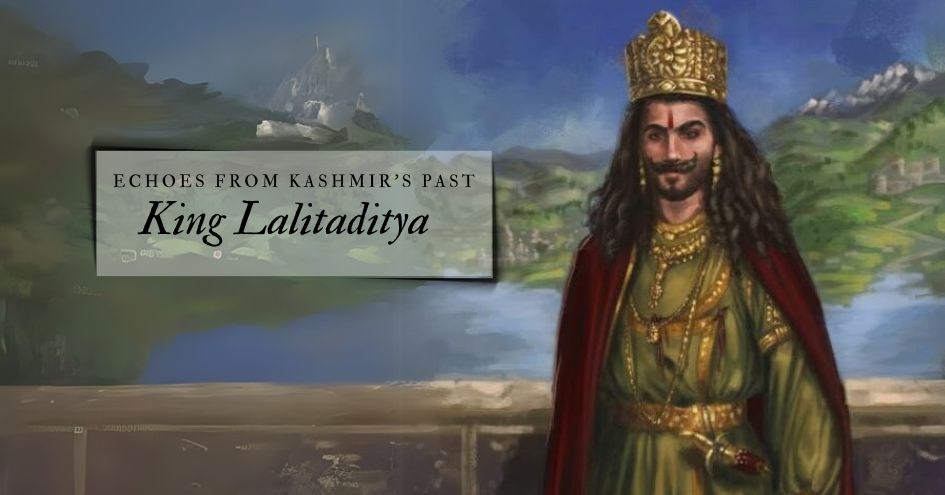
The Rajatarangini is a legendary metrical and historical chronicle of the Kings of Kashmir by the erudite Kalhana. While historians consider the work as a largely exaggerated account of the historical exploits of the Indian kings of Kashmir it covers, nevertheless, there must be some fire for the smoke to arise.
For instance, while Kalhana has exaggerated the achievements of kings who belonged to a bygone era, not even the names of these kings are known today. The history of the Kashmir Valley lies quiet, awaiting discovery by someone like Kalhana in the 11th century C.E.
One of these names that commands our attention is that of King Lalitaditya Muktapida, a man who reigned in the 8th Century C.E. and was described as a ‘world conqueror’ by Kalhana. Perhaps, it is an exaggerated account, but for exaggeration, there must be some merit.
King Lalitaditya was born in the Karkota Dynasty in the early 8th Century C.E. to King Pratapaditya and Queen Narendraprabha. While we have always believed the Indo-Gangetic plains to be the site of the greatest Indian empires, Lalitaditya proves us wrong.
From the heights of Kashmir, Muktapida swept west, south and east with his armies to historically conquer northwest, central and large parts of east India. According to Kalhana, Muktapida may have annexed Karnataka and the entire Konkan region, which historians consider as far-fetched.
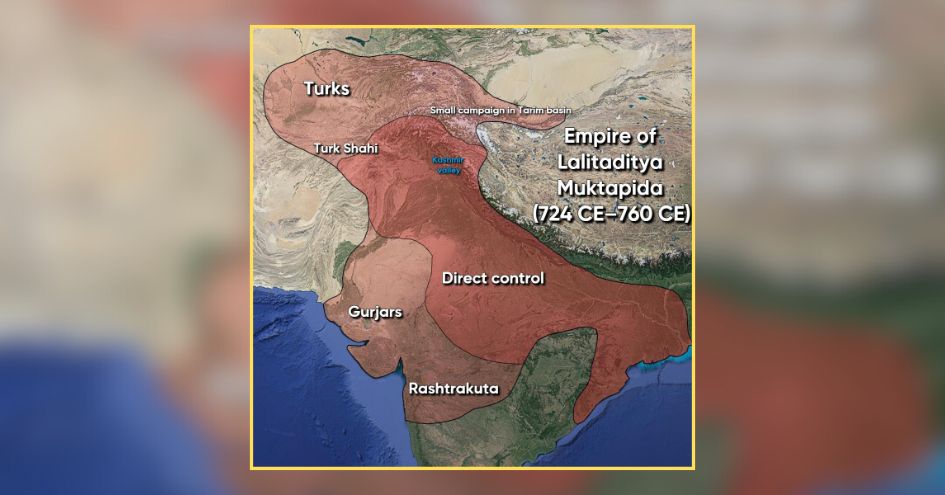
However, even his historically acknowledged feats, as outlined by several historians, is nothing but astounding. Lalitaditya conquered areas in the far east of India, northwest of India like the regions of modern day Afghanistan and Punjab and extended his empire all the way to the heart of mainland India. Lalitaditya made his way all the way to Magadha and possibly even Kalinga, before making his way to Kashmir. One of Lalitaditya’s greatest military achievements is the conquest of Kannauj, once the seat of the legendary King Harshavardhana of the Pushyabhuti dynasty. He wrested its control from King Yashovarman, but allowed him to maintain his autonomy in return for acknowledging the former’s supremacy over the latter.
As we hear from Kalhana himself, Lalitaditya marched his elephants to the place of their birth and took back even more of their brethren to Kashmir! This is supported by evidence from the historian Hermann Goetz who theorised that the Kashmiri king was one of the main reasons why Afghanistan, which was under the control of the Turkic Shahi nobles, fell under the Hindu Shahi king. The Turkic Shahi princelings accepted nominal vassalage under the Tang Chinese for greater autonomy. But, under the growing influence of the Karkotas in the region, the Turkic Shahis were eventually deposed and replaced by the Hindu Shahi rulers who would eventually fall to the Caliphate forces, nearly two centuries later.
Further, Lalitaditya lived during the time of the vast Umayyad Caliphate. While the Caliphate forces spread far east into the regions of Europe and south into Africa, the presence of the Karkota empire put a halt to their westward expansion for several decades.
Lalitaditya, himself, had ties to the Tang empire of China. While the Tang considered the Kashmiri King to be a vassal of the Tang Chinese, Lalitaditya may have considered himself an ally. However, King Lalitaditya, as a consequence of his association with the Tang Chinese was also involved in their campaigns, thereby allowing him to cement his reputation as a great conqueror in lands not traditionally considered within the Indian subcontinent. When the Tang dynasty compiled its own history in the New Book of the Tang, the exploits of King Lalitaditya found mention in that text. He is called ‘Mu-to-pi’ or ‘Muduobi’ which is a variation of Muktapida. According to the historian Tansen Sen, Lalitaditya Muktapida provided forces to the Tang to fight the aggressive Tibetan Empire. The historian states that the Kashmiri king achieved great successes in the campaigns against the Tibetans, thereby cementing his martial prowess. Several contemporary sources other than the Rajatarangini and numismatic sources attest to this fact.
Remember Rajasimha Pallava, the Pallava king who sent an embassy to the Tang emperor, promising military help? Well Lalitaditya fulfilled that promise in the next generation, even though he would never be aware of it!
This Kashmiri king lived during a time of great historical activity. He ruled lands influenced by the Tang, Umayyad and the Tibetans.
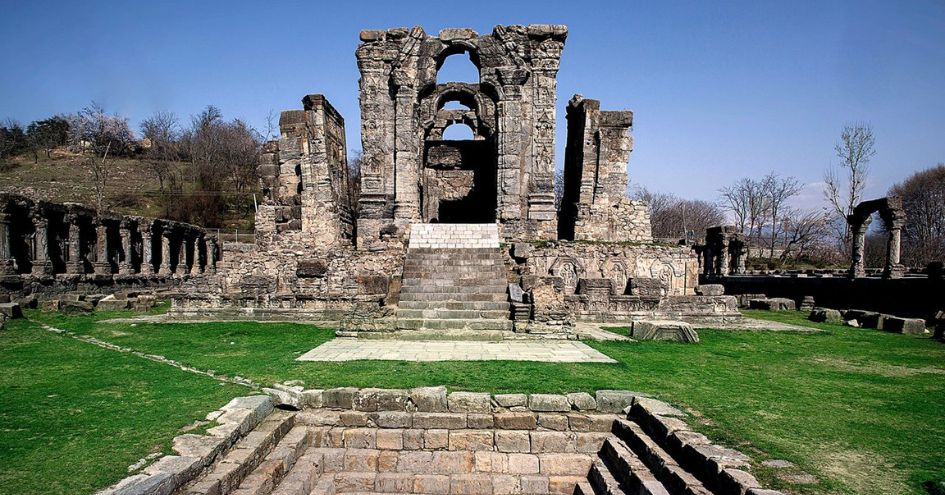
Lalitaditya would go to patronise and consecrate great temples like the Martand Surya Temple, that unfortunately lies in ruins today. He consecrated numerous shrines dedicated to Lord Vishnu according to Kalhana like a shrine of Lord Keshava in Darpitapura, an image of Nṛhari in Strirajya, the Muktasvamin shrine at Hushkapura, made an offering to Lord Vishnu after building the Lokapunya town and several shrines at his capital city of Parihaspura.
Lalitaditya also patronised Buddhism and built a vihara with a stupa at Hushkapura, erected the Rajavihara with a large chaitya, and a large image of the Buddha in it. He also apparently took a loan from Lord Bhutesha (Lord Siva) and repaid the loan ten times over. He also constructed the Jyeshtha Rudra stone temple dedicated to Lord Siva.
Today, much of Lalitaditya’s architectural legacy is in ruins due to time and neglect. However, even his name, once catapulted to mythical status, lies forgotten. The Kashmir valley hides many such historical gems waiting to be uncovered. Possibly somewhere in the valley, there is still an echo from the past that isn’t completely forgotten.
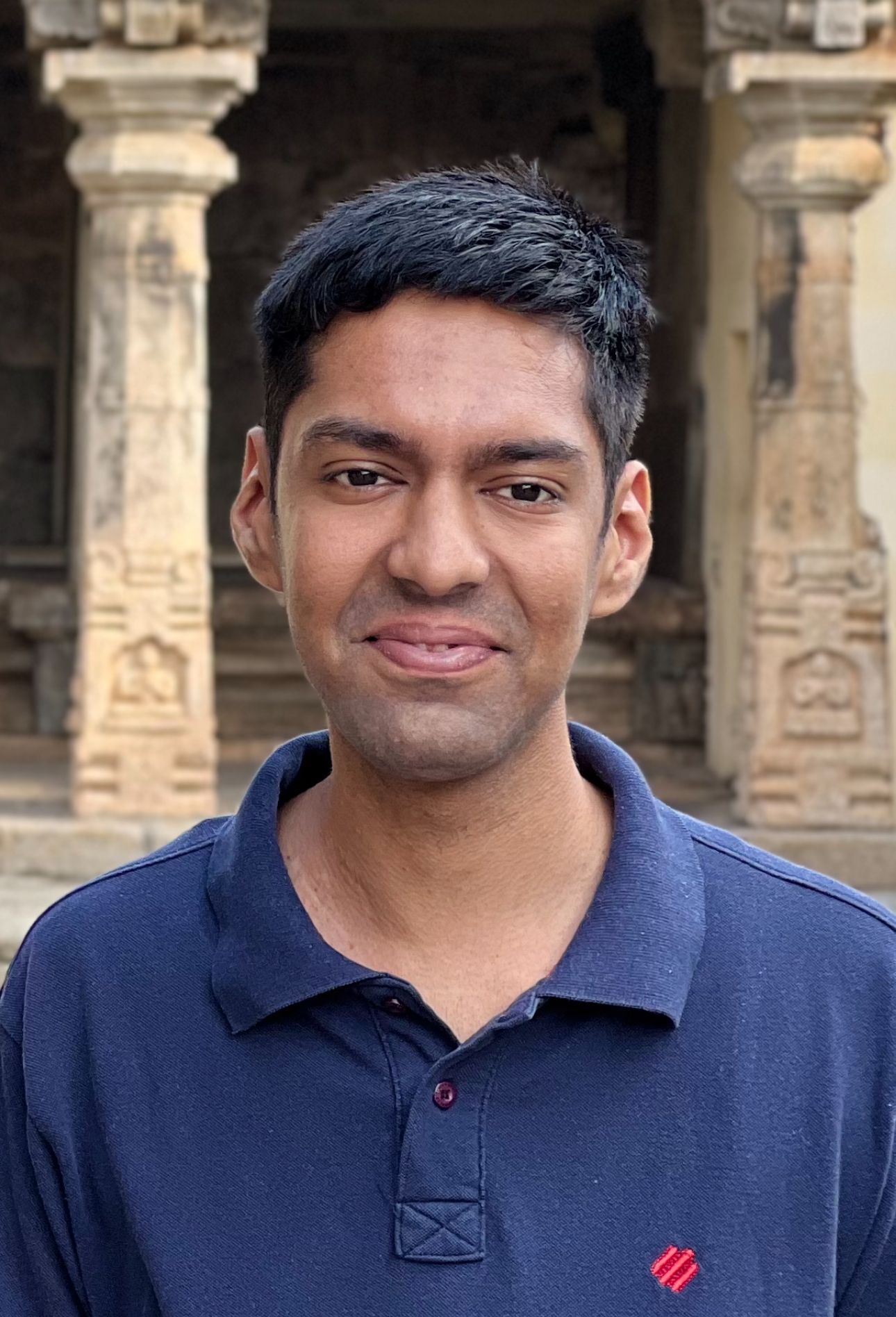 Vignesh Ganesh is a lawyer and writer. He is interested in ancient history and Itihasa and this interest culminated in his first book, "The Pallavas of Kanchipuram: Volume 1", which he co-authored with Mr. K. Ram, a fellow enthusiast of Indian history and culture.
Vignesh Ganesh is a lawyer and writer. He is interested in ancient history and Itihasa and this interest culminated in his first book, "The Pallavas of Kanchipuram: Volume 1", which he co-authored with Mr. K. Ram, a fellow enthusiast of Indian history and culture.
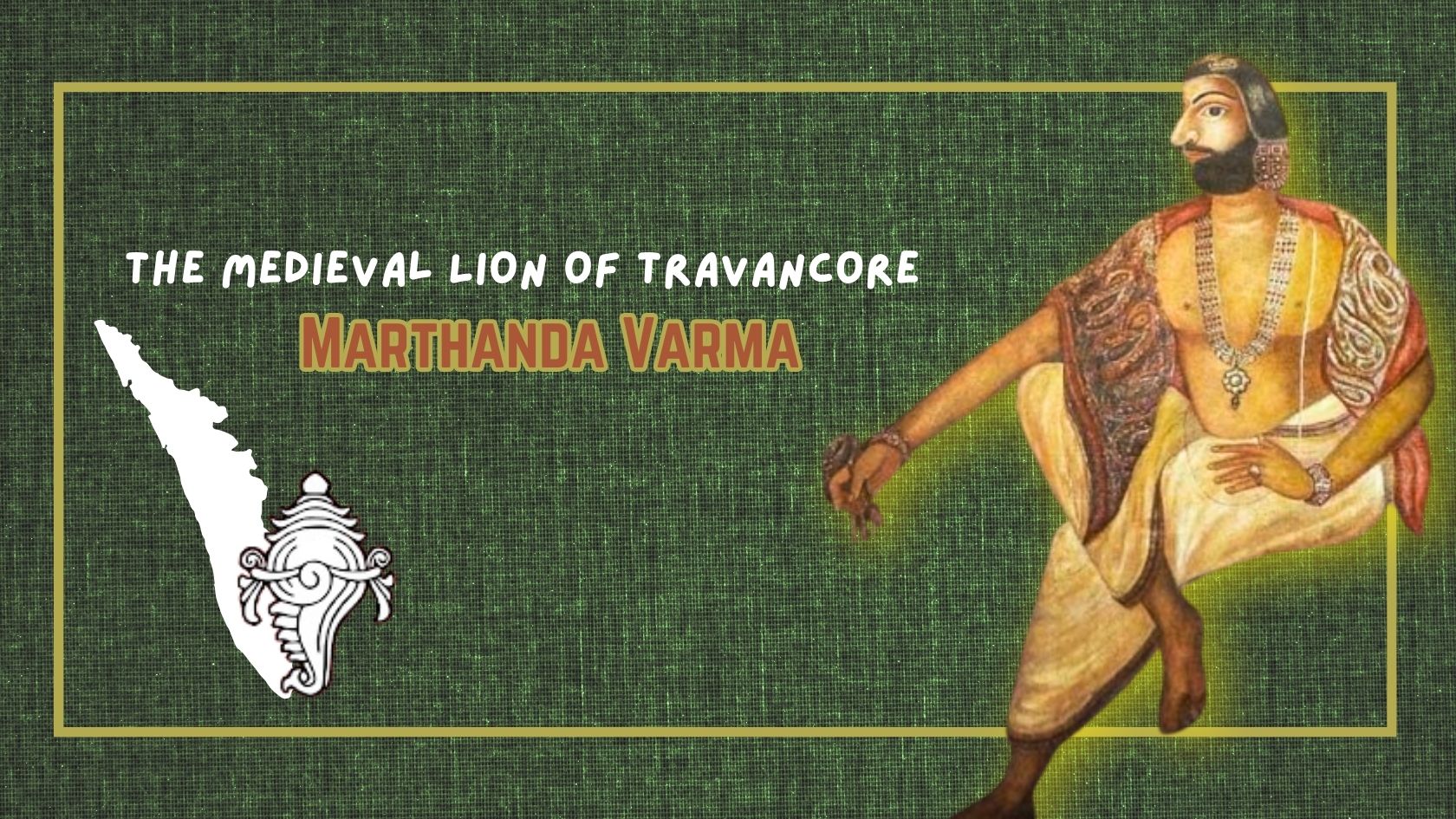
Shri Ramachandra Prasad's captivating narrative and the hot chai that was served at the right time transported me to ancient Kerala, where the extraor...
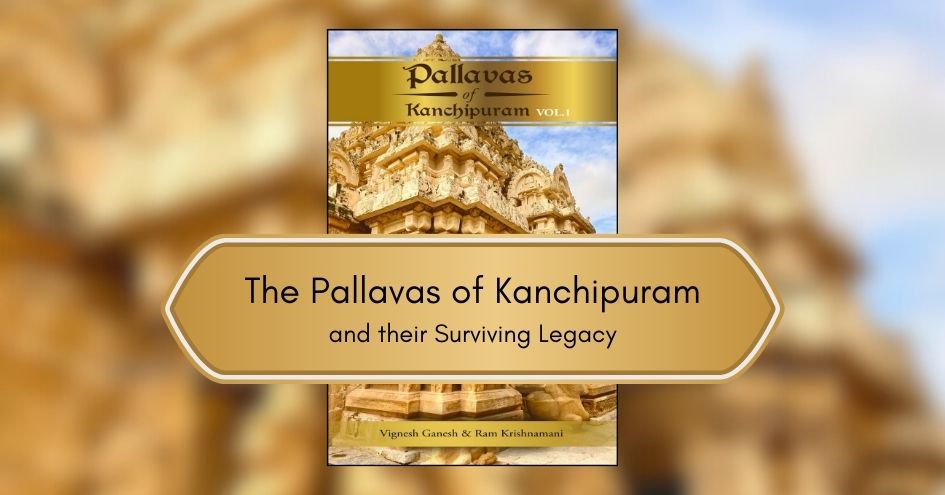
Introduction In Bharatvarsha, History is not the account narrated by victors. It is the record left behind by survivors. The study of Indian History...
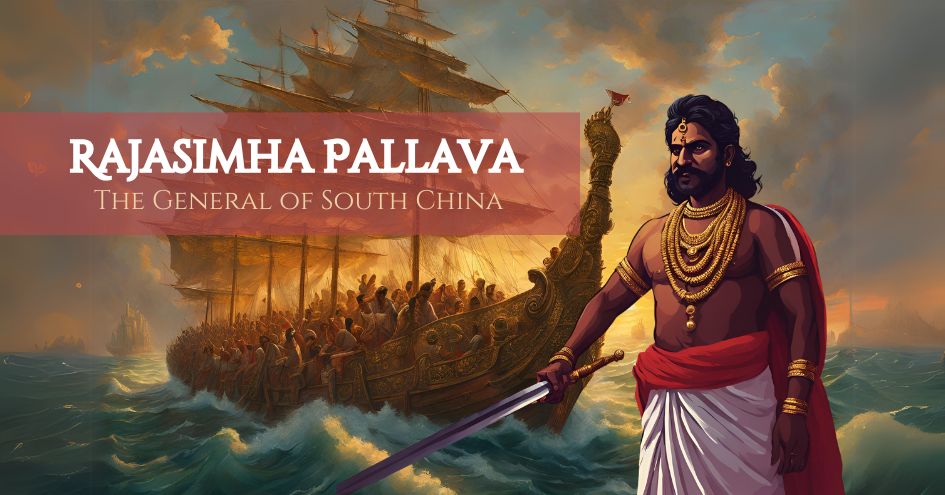
It is the first-half of the 8th Century C.E. in South India. The Pallava kingdom possesses strength and prosperity with some of the greatest monument...